Matthew Groth
Deephys: Deep Electrophysiology, Debugging Neural Networks under Distribution Shifts
Mar 17, 2023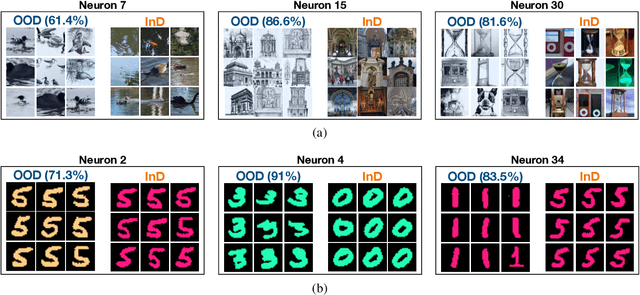
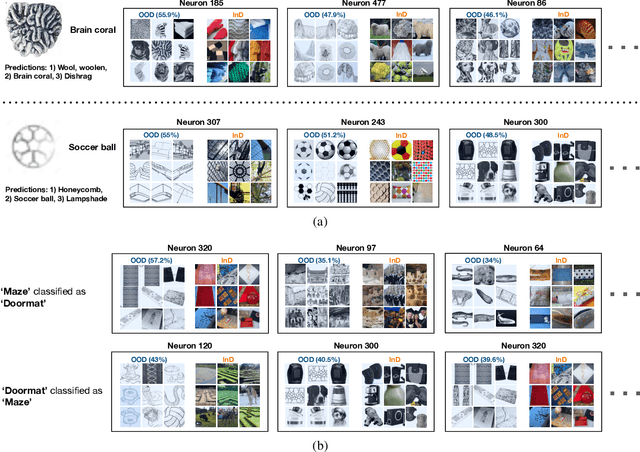
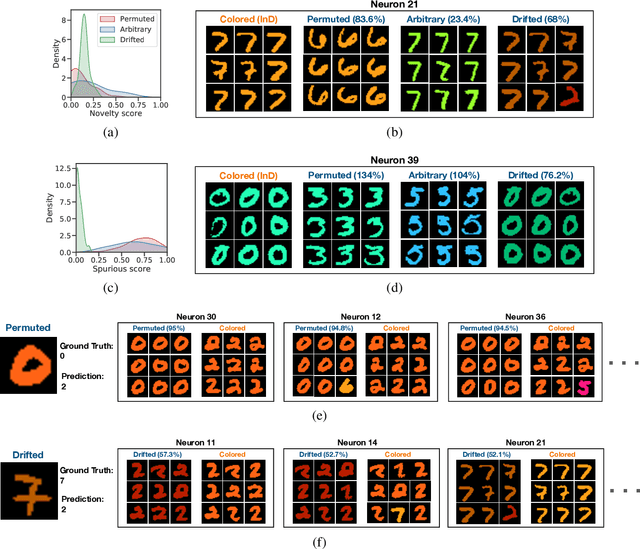
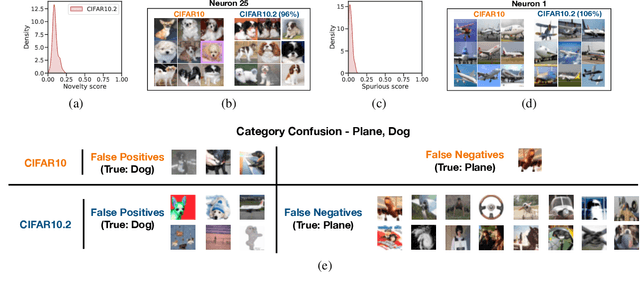
Abstract:Deep Neural Networks (DNNs) often fail in out-of-distribution scenarios. In this paper, we introduce a tool to visualize and understand such failures. We draw inspiration from concepts from neural electrophysiology, which are based on inspecting the internal functioning of a neural networks by analyzing the feature tuning and invariances of individual units. Deep Electrophysiology, in short Deephys, provides insights of the DNN's failures in out-of-distribution scenarios by comparative visualization of the neural activity in in-distribution and out-of-distribution datasets. Deephys provides seamless analyses of individual neurons, individual images, and a set of set of images from a category, and it is capable of revealing failures due to the presence of spurious features and novel features. We substantiate the validity of the qualitative visualizations of Deephys thorough quantitative analyses using convolutional and transformers architectures, in several datasets and distribution shifts (namely, colored MNIST, CIFAR-10 and ImageNet).
Symmetry Perception by Deep Networks: Inadequacy of Feed-Forward Architectures and Improvements with Recurrent Connections
Dec 08, 2021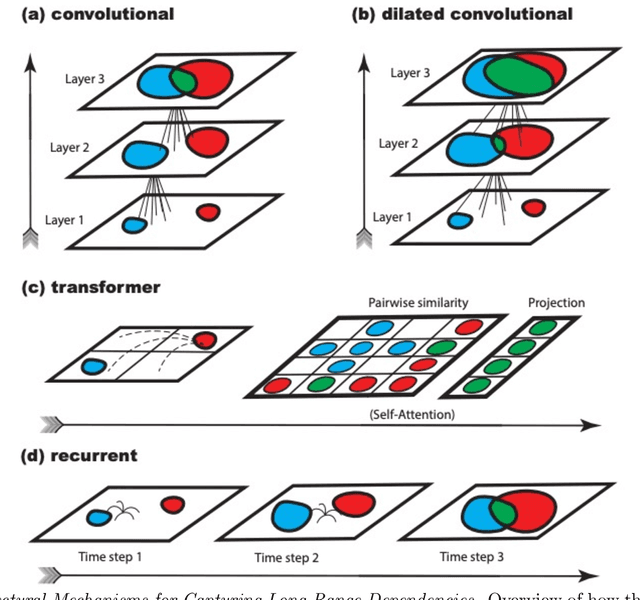
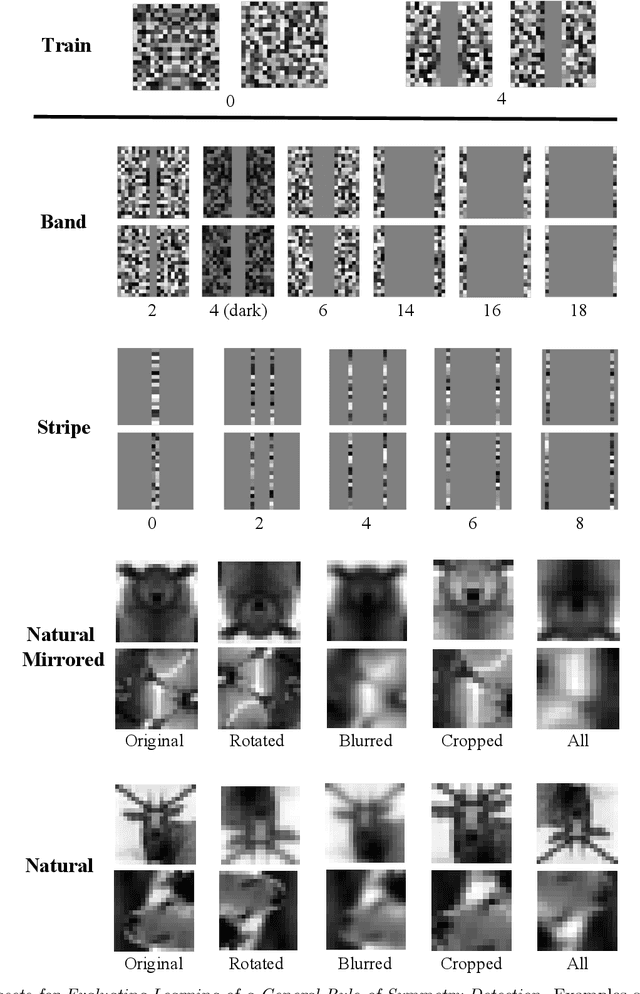
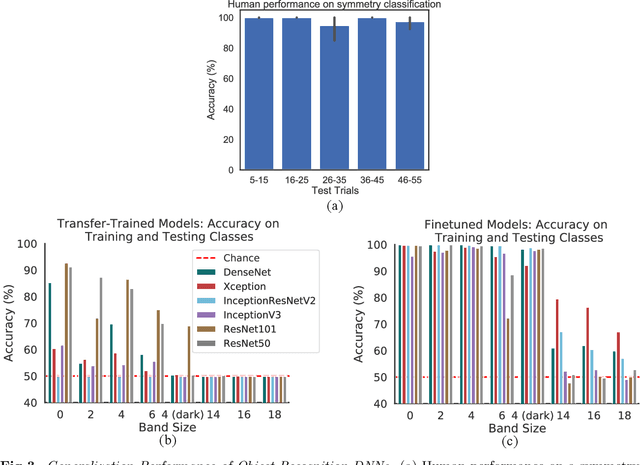
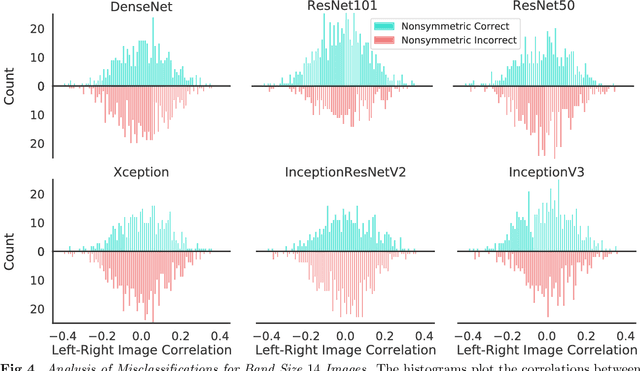
Abstract:Symmetry is omnipresent in nature and perceived by the visual system of many species, as it facilitates detecting ecologically important classes of objects in our environment. Symmetry perception requires abstraction of non-local spatial dependencies between image regions, and its underlying neural mechanisms remain elusive. In this paper, we evaluate Deep Neural Network (DNN) architectures on the task of learning symmetry perception from examples. We demonstrate that feed-forward DNNs that excel at modelling human performance on object recognition tasks, are unable to acquire a general notion of symmetry. This is the case even when the DNNs are architected to capture non-local spatial dependencies, such as through `dilated' convolutions and the recently introduced `transformers' design. By contrast, we find that recurrent architectures are capable of learning to perceive symmetry by decomposing the non-local spatial dependencies into a sequence of local operations, that are reusable for novel images. These results suggest that recurrent connections likely play an important role in symmetry perception in artificial systems, and possibly, biological ones too.
 Add to Chrome
Add to Chrome Add to Firefox
Add to Firefox Add to Edge
Add to Edge